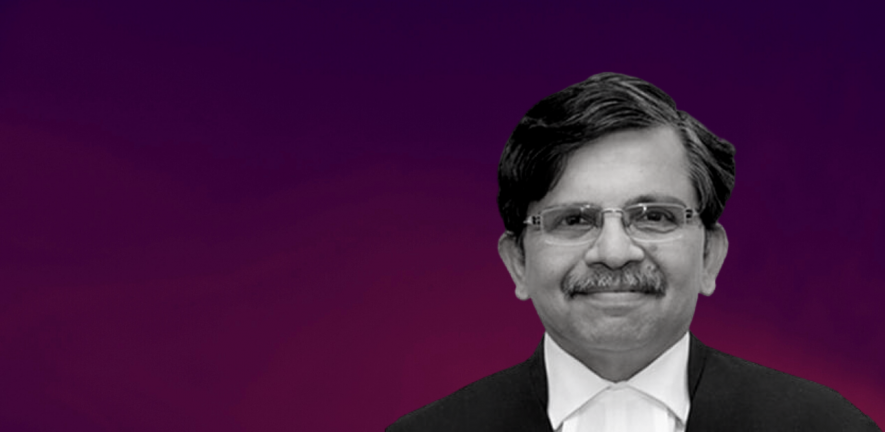For ‘Justice Seen to be Done’, Judges Should be Held Accountable for Their Actions: Justice Muralidhar

Seaking at the Second S.R. Sankaran Memorial Lecture, former Chief Justice of the Odisha High Court and senior advocate S. Muralidhar spoke on the famous legal aphorism: “Justice should not only be done, it must be seen to be done.”
In his opinion, one of the ways justice can be seen to be done is if those who are supposed to impart it— i.e., the judges— are held accountable for their actions.
He also stated that though India’s legislature has failed to make judicial accountability a statutory principle, it exists in the Indian Constitution under Article 124(4) which allows the impeachment of Supreme Court judges (and Article 218, which extends the provision to high court judges).
However, Muralidhar added, “The Constitution talks of impeachment of judges for improper conduct … [but it has] a very high threshold.”
In India, a judge can only be removed for “proved misbehaviour or incapacity”, but it requires the support of a majority of each House of the Parliament (with the quorum being two-thirds members of each House) which has to present an address to the President in the same session, who shall then pass an Order to this effect.
The Justice Sawant Committee, which looked into the impeachment of Supreme Court Justice V. Ramaswami for his tenure as Chief Justice of the Punjab and Haryana High Court, defined “misbehaviour” as “conduct or a course of conduct which brings dishonour or disrepute to the judiciary as to shake the faith and confidence which the public reposes in the judiciary”.
Defining “misbehaviour”, further, the committee added, “It is not confined to criminal acts or to acts prohibited by law. It is not confined to acts contrary to law. It is not confined to acts connected with the judicial office. It extends also to activities of a judge, public or private.”
But despite such verbiage, the impeachment motion failed because it did not get a majority in Lok Sabha.
After this case, there have been three other instances of impeachment of judges in India.
The first among them was the case of Justice Soumitra Sen of the Calcutta High Court, on the ground of misappropriation of funds. Justice Sen resigned after the impeachment motion was successfully passed in Rajya Sabha.
In 2015, an impeachment motion was initiated against Justice J.B. Pardiwala of the Gujarat High Court.
Lastly, two unsuccessful attempts were made to impeach Justice C.V. Nagarjuna Reddy of the High Court for Andhra Pradesh and Telangana.
Since the impeachment of judges is undertaken by the Parliament, which is a political body, the causes, initiation and eventual fate of the impeachment may unavoidably be tainted by politics.
Take the example of Muralidhar himself. As a judge of the Delhi High Court, he presided over a high-profile case involving the prosecution of the Bharatiya Janata Party (BJP) minister and the then Union finance minister Anurag Thakur (who is currently minister of sports, youth affairs, and information and broadcasting).
Thakur was accused of inciting communal violence.
Communal violence broke out on February 23, 2020 against the backdrop of the anti-Citizenship (Amendment) Act (CAA), 2019 and the proposed National Register for Citizens protests in northeastern Delhi between supporters of CAA and those protesting against it.
The protests coincided with the Delhi assembly election of February 2020. In one of the election rallies, Thakur said: “Desh ke gaddaron ko” (the traitors of the country), and the crowd responded: “Goli marro saloon ko” (shoot them).
The “traitors” reference was apparently to the anti-CAA protestors. The crowd’s response was a throwback to the chants first made by another BJP leader Kapil Mishra during a pro-CAA rally.
When the case came up before the Bench of Justice Muralidhar, he reprimanded the Delhi police for not registering first information reports against Thakur and other BJP leaders for their alleged inflammatory speeches.
Within a fortnight, Muralidhar was transferred with immediate effect. Past transfer notifications suggest that judges are given reasonable time to assume office. However, that was not the case with Muralidhar.
Even if the government had decided to act on the Supreme Court Collegium’s recommendation, the timing of the transfer left much to be desired.
How outrageous a thought is it to think that someone like Justice Muralidhar may face impeachment proceedings given the political climate in the country?
Therein lies the rub.
In theory, judicial accountability is a wonderful concept, and so is representative democracy, but when representative democracy metamorphoses into majoritarianism, the parameters of judicial accountability may have to be redefined to ensure a balance is maintained in society.
After all, justice is balance.
But the words of a true constitutionalist such as Justice Muralidhar must keep the conversation going on.
Background
The lecture was jointly organised by the School for Democracy, Centre for Equity Studies and Safai Karmchari Andolan.
Sankaran was a legendary civil servant, social worker and former chief secretary of the government of Tripura.
Known as a “people’s officer”, he transferred constitutional principles into practice thereby benefiting thousands of people.
He was an ethical touchstone to many in all sectors of public action. Among a huge galaxy of remarkable work, Sankaran implemented government schemes for setting up hostels for the Scheduled Castes and Scheduled Tribes, which benefited many generations.
He also drafted legislation outlawing bonded labour and worked towards prohibiting Untouchability.
When two Dalits scaled Mount Everest, they took photographs of Dr B.R. Ambedkar and S.R. Sankaran with them, so that they could grace the highest vantage point on Earth.
Gursimran Kaur Bakshi is a staff writer at The Leaflet
Get the latest reports & analysis with people's perspective on Protests, movements & deep analytical videos, discussions of the current affairs in your Telegram app. Subscribe to NewsClick's Telegram channel & get Real-Time updates on stories, as they get published on our website.
























